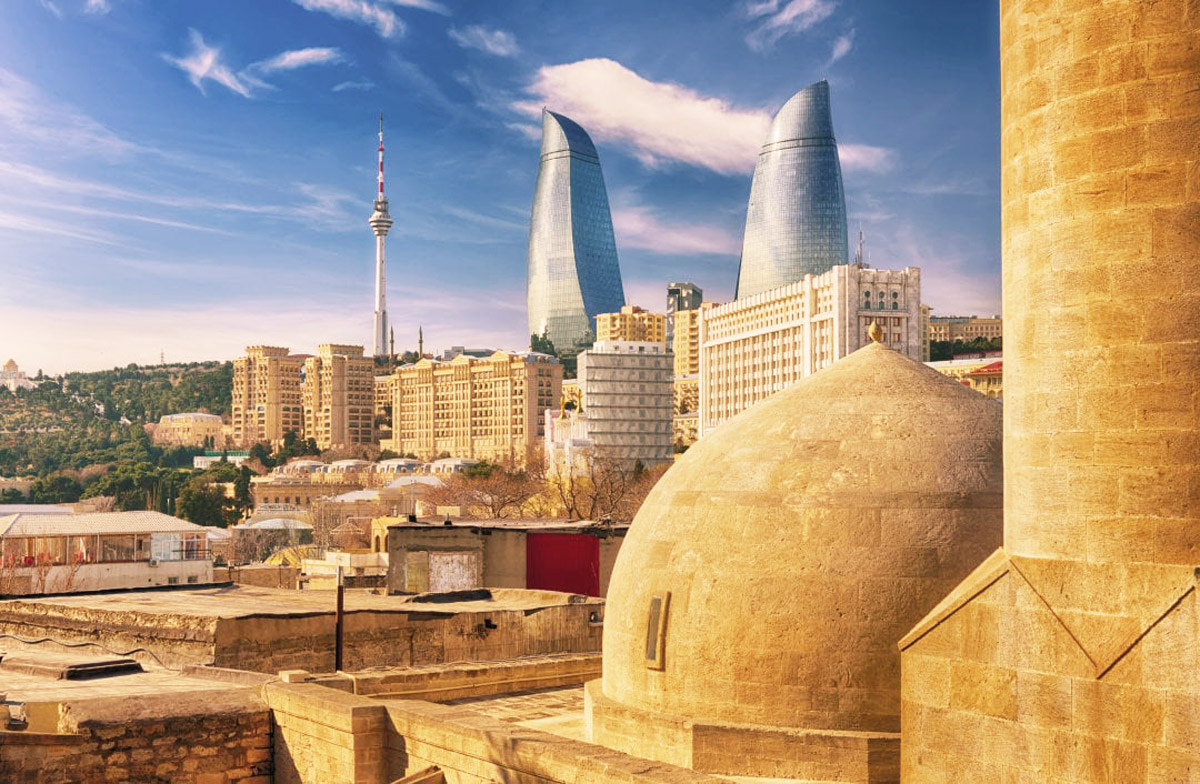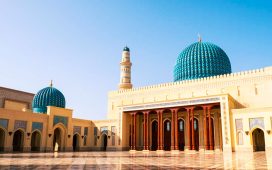Baku, the capital of Azerbaijan, is a city where the ancient Silk Road heritage meets futuristic architecture. With its dramatic Caspian Sea setting, modern flame-shaped skyscrapers, and beautifully preserved Old City walls, Baku offers travelers a blend of history, culture, and vibrant city life.
History of Baku

Baku’s history reflects its position at the crossroads of East and West. Archaeological evidence shows human settlements here for millennia, but it rose to prominence in the Middle Ages as a trading post on the Silk Road. Its strategic Caspian location made it a coveted prize for Persians, Ottomans, and Russians. In the 19th century, Baku experienced an oil boom that transformed it into a wealthy, cosmopolitan city. Under Soviet rule, it became an industrial hub, and after Azerbaijan’s independence, Baku emerged as a vibrant capital where historic Old City walls meet modern flame-shaped towers.
Landmarks and Architecture
Baku is a city of contrasts, where medieval alleyways coexist with glass towers.
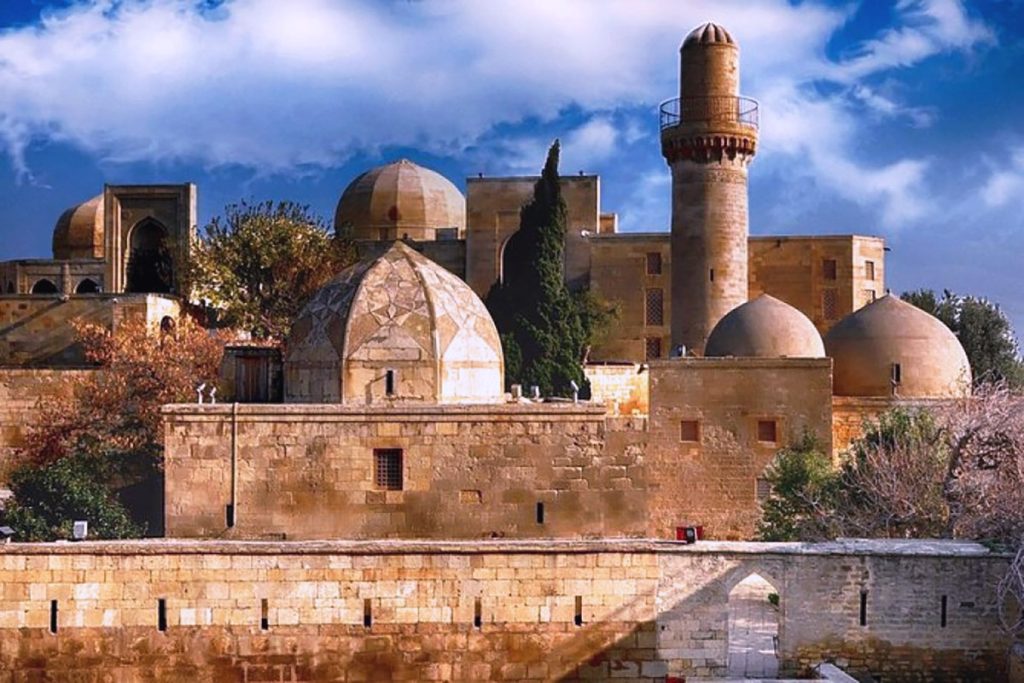
- Icherisheher (Old City): A UNESCO World Heritage Site, this walled town is the historic heart of Baku. Stroll through narrow streets to discover caravanserais, hammams, and traditional courtyards. Don’t miss the Maiden Tower, a 12th-century stone mystery, and the Palace of the Shirvanshahs, a masterpiece of medieval Azerbaijani architecture.
- Flame Towers: These iconic, flame-shaped Fairmont Hotel skyscrapers dominate the skyline and light up brilliantly at night, symbolizing Azerbaijan’s ancient connection to fire worship.
- Heydar Aliyev Center: Designed by Zaha Hadid, this sweeping, futuristic building is one of Baku’s most recognizable landmarks and a celebration of modern design.
Museums and Culture
Baku’s cultural scene reflects its position at the crossroads of East and West, where centuries of Silk Road heritage meet modern creativity. The city’s museums not only preserve Azerbaijan’s deep history but also showcase its evolving identity through art, design, and storytelling. From ancient carpets that carry the traditions of nomadic weavers to striking galleries of contemporary art, Baku’s museums offer travelers a chance to step inside the heart of Azerbaijani culture.
Spotlight: Heydar Aliyev Center
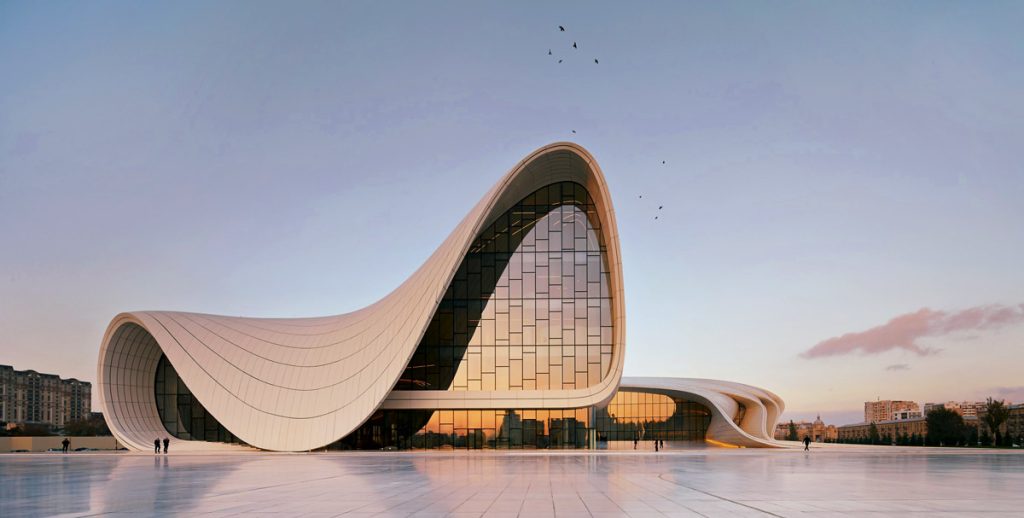
No visit to Baku is complete without experiencing the Heydar Aliyev Center. Designed by the late Zaha Hadid, this futuristic architectural masterpiece has no sharp angles, symbolizing the fluidity of Azerbaijani culture. Inside, visitors can explore rotating art and cultural exhibitions, while the exterior plaza provides stunning photo opportunities against the sweeping white curves of the building.
Other notable museums include:
- Azerbaijan National Carpet Museum: With its building shaped like a rolled carpet, this museum showcases centuries of weaving tradition and artistry.
- Azerbaijan National Art Museum: Featuring over 15,000 works, the museum highlights European, Russian, and Azerbaijani art.
- Modern Art Museum: A sleek space dedicated to contemporary Azerbaijani and international artists.
Neighborhoods
- Icherisheher: Timeless charm with cobbled lanes, artisan shops, and traditional teahouses.
- Fountains Square: The lively modern hub with shopping, cafés, and nightlife.
- Baku Boulevard (Seaside Promenade): Stretching along the Caspian Sea, it’s ideal for strolling, cycling, or enjoying amusement rides and concerts.
- Nizami Street: Baku’s main pedestrian avenue, lined with boutiques, restaurants, and elegant architecture.
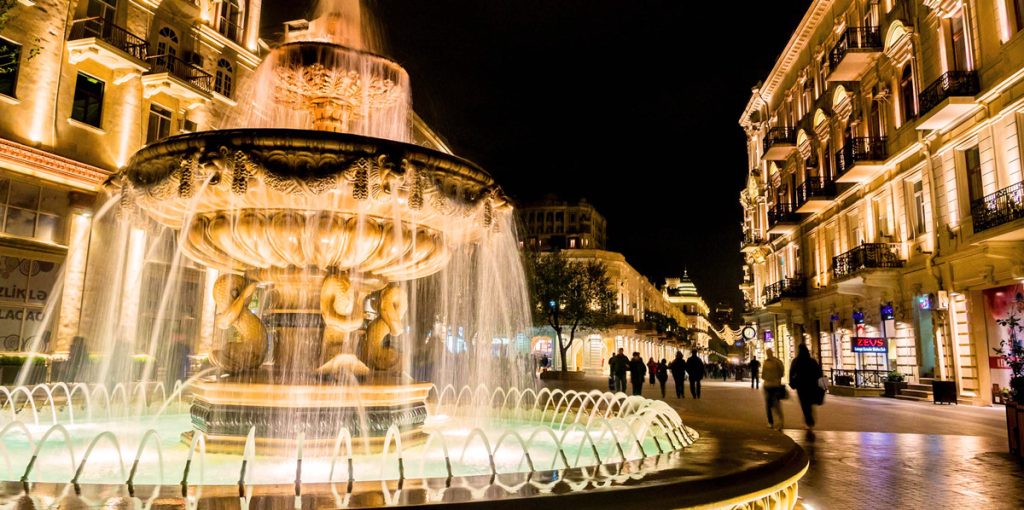
Food and Dining
Azerbaijani cuisine is rich in flavors influenced by the Silk Road.

- Sumakh Restaurant: A modern twist on Azerbaijani cuisine, with stylish interiors and signature dishes like qutab (stuffed flatbreads).
- Shirvanshah Museum Restaurant: Located in a restored caravanserai, it offers an atmospheric dive into traditional dishes like dolma and pilaf.
- Nargiz: A favorite for locals and visitors on Fountains Square, serving classics such as lamb kebabs and plov.
- Chinar: A trendy hotspot blending Asian fusion with local touches, popular with Baku’s cosmopolitan crowd.
- Dolma Restaurant: Casual and cozy, known for its namesake stuffed grape leaves and homestyle meals.
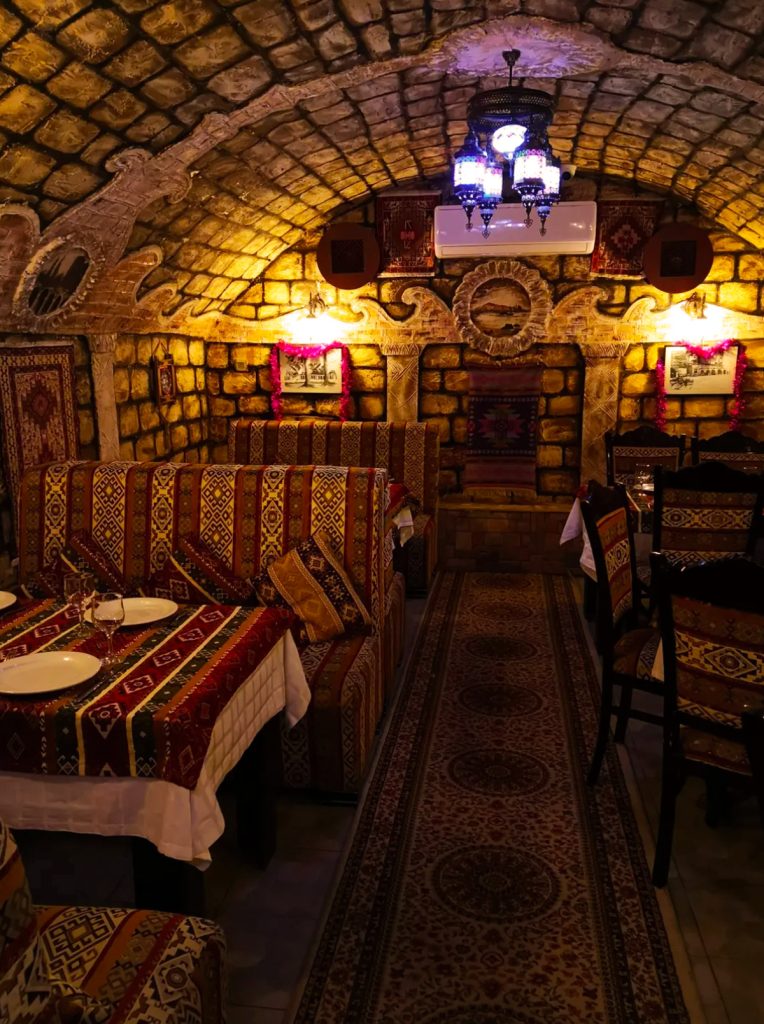
Hidden Gems
Beyond Baku’s grand landmarks and bustling boulevards lie experiences that reveal the city’s more mysterious and authentic side. These hidden gems highlight Azerbaijan’s deep connection to fire, earth, and history, offering travelers the chance to explore sites that feel both ancient and otherworldly.

- Ateshgah Fire Temple: A unique 17th-century temple where natural gas flames once burned eternally, a fascinating reminder of Azerbaijan’s Zoroastrian past.
- Yanardag: Once hidden in plain sight, now a celebrated site, this burning hillside inspired Azerbaijan’s fiery identity.
- Gobustan National Park: A UNESCO World Heritage Site, Gobustan is one of Azerbaijan’s most remarkable cultural landscapes. The park is home to more than 6,000 ancient petroglyphs etched into rocky outcrops, some dating back 40,000 years. These carvings depict hunting scenes, tribal dances, animals, boats, and even early astronomical symbols, offering a window into the lives of prehistoric communities. Alongside the carvings, Gobustan is famous for its mud volcanoes — surreal formations where the earth bubbles and erupts with thick gray mud instead of lava. The site also features a modern museum that contextualizes the archaeological finds, making it both an educational and awe-inspiring day trip.

Hammams and Relaxation
Azerbaijan’s capital has long embraced the tradition of hammams, echoing centuries of Silk Road culture where bathhouses were more than just places to wash — they were centers of social life and relaxation.

- Tazabey Hamam: Dating back to the 19th century, this historic hammam near the Old City offers a traditional steam bath experience with ornate interiors, marble rooms, and authentic treatments like kese scrubbing and foam massages.
- Teze Bey Bathhouse: Another well-preserved hammam, popular among locals, it provides a window into the city’s cultural heritage while still functioning as a working bathhouse.
- Modern Spas: For a more contemporary twist, upscale hotels such as the Fairmont Flame Towers and JW Marriott Absheron feature luxury hammam-inspired spa facilities, combining Eastern traditions with modern wellness.
Visiting a hammam in Baku is not only a way to unwind after sightseeing but also a chance to step into a centuries-old ritual that connects travelers to the city’s rich cultural fabric.
Day Trips
Baku is ideally situated for memorable excursions beyond the city, where natural wonders and ancient history await.
- Gobustan National Park: A UNESCO World Heritage Site, home to over 6,000 ancient petroglyphs (rock carvings) that date back thousands of years. The site gives visitors a fascinating glimpse into the lives of prehistoric communities.
- Ateshgah Zoroastrian Fire Temple: A 17th-century temple dedicated to fire worship, built on a site where natural flames once burned eternally. It remains an important place of religious and cultural significance.
- Mud Volcanoes: Located near Gobustan, these bubbling, lunar-like landscapes are unique to Azerbaijan, which boasts nearly half of the world’s mud volcanoes.
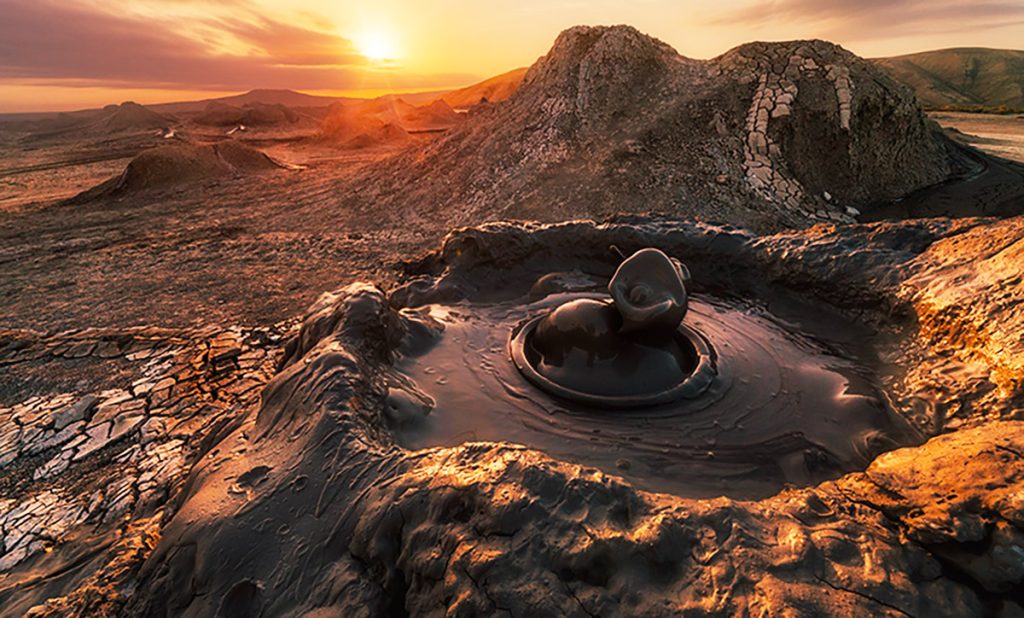
Spotlight: Yanar Dağ (Burning Mountain)
Just a short drive from central Baku lies one of Azerbaijan’s most surreal natural wonders — Yanar Dağ, or “Burning Mountain.” This hillside on the Absheron Peninsula has been ablaze for centuries, with natural gas seeping through the earth and igniting into a continuous wall of fire. The flames dance across a 10-meter stretch of hillside, glowing brightest at night and in the winter months when the contrast against the cold air is most dramatic.
Legend has it that Marco Polo once described flames like these when traveling through the region, and they are thought to have inspired Azerbaijan’s ancient reputation as the “Land of Fire.” Today, Yanar Dağ is a protected site with a visitor center and small museum that explain the science and cultural history behind this eternal flame. It’s an easy and unforgettable half-day trip from Baku — a chance to witness the natural spectacle that has defined Azerbaijan’s identity for centuries.
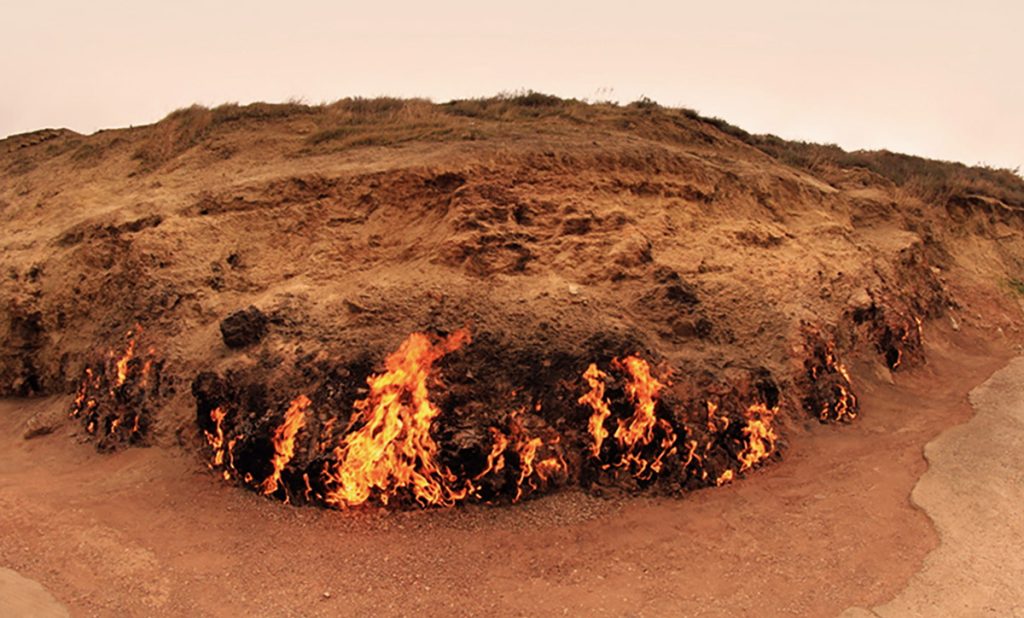
Nightlife
Baku comes alive after dark, mixing tradition with modernity. Trendy bars, rooftop lounges, and seaside clubs offer options for all tastes. Nizami Street and the Boulevard are hotspots, while stylish venues like Enerji Club and Otto Bar keep the energy high.
Practical Tips
- Best time to visit: Spring and autumn, when the weather is mild and perfect for exploring both the city and its surroundings.
- Currency: Azerbaijani Manat (AZN).
- Language: Azerbaijani is official, but Russian and English are widely understood in central areas.
- Getting around: The Baku Metro is efficient, taxis are plentiful, and walking is ideal for exploring central districts.
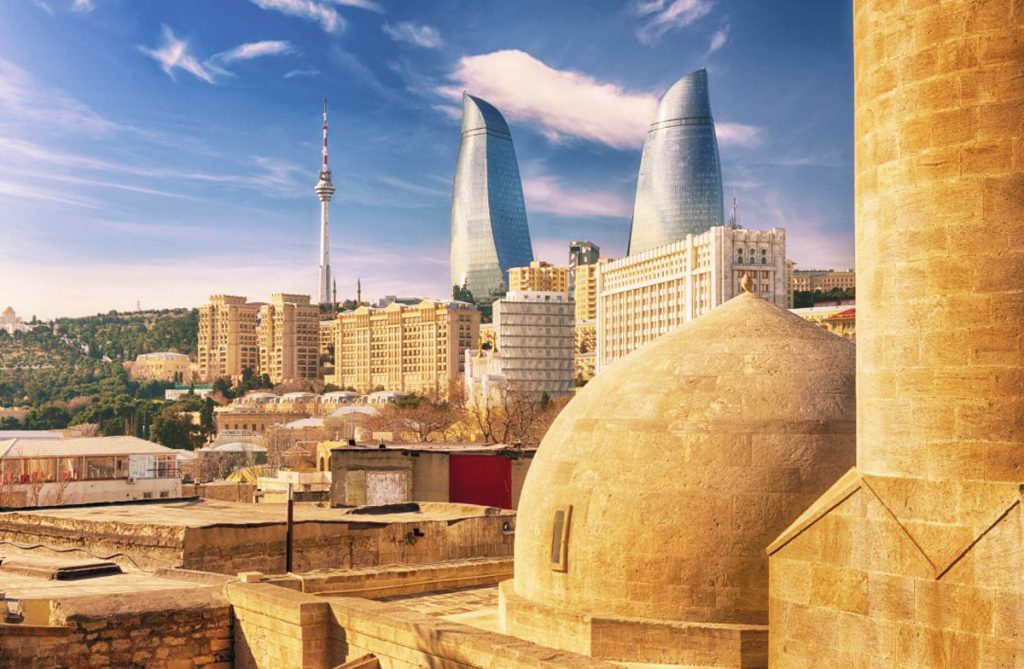
Final Thoughts
Baku is more than a capital — it’s a living mosaic of cultures, traditions, and ambitions. From wandering the cobbled alleys of Icherisheher to marveling at the futuristic Flame Towers, from the silence of Gobustan’s petroglyphs to the eternal fires of Yanar Dağ, the city offers experiences that bridge the past and the present. Whether you’re savoring local plov in a caravanserai, unwinding in a historic hammam, or simply watching the Caspian Sea shimmer at sunset, Baku leaves an impression that lingers long after you’ve left. It is, truly, a capital of contrasts — and one that rewards every step of exploration.

